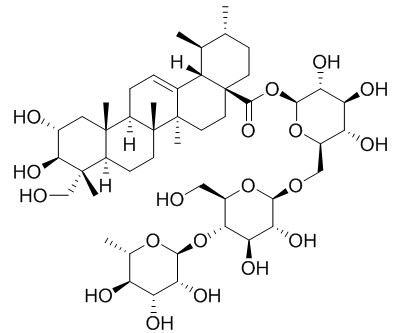Notes TOC
TOP
Vitamin D
A large-scale double-blind study involving a thousand of adults has shown that vitamin D3 supplementation (2000 IU/day) reduced leukocyte telomere shortening by 140 base pairs over four years. Given the typical natural shortening rate of ~45 bp/year, this corresponds to a preservation of 35 bp annually, cutting the average rate down to just 10 bp/year, or a striking 78% reduction in telomere shortening.

Alpha-ketoglutarate (AKG)
... metabolites of the tricarboxylic acid (TCA) cycle (Krebs cycle); improves mitochondrial function, energy production; extends lifespan and healthspan in multiple organisms... ...kidney function...

HMB (B-Hydroxy-B-methylbutyrate)
... not only muscle building but enhance neuronal growth, and protect learning and memory.

Carnosine
 | Antioxidant, antiglycator (inhibits the formation of certain AGEs) and metal chelator. On wikipedia, On PubMed |
Nephro-procector: Carnosine Activates Cellular Stress Response in Podocytes and Reduces Glycative and Lipoperoxidative Stress
Telomer protector?
n.b. another anti AGE: benfotiamine
(benfotiamine (on wikipedia) a lipophilic derivative of thiamine [vitamin B1] with better bioavailability)
n.b. another anti AGE: fisetin found in strawberries c.f. PLoS one.
more bio-available "form"? : Carcinine ? [an histamine H3 receptor antagonist]
TMG (Trimethylglycine)
... Betain seems to be exercise mimetic! (Betain ~ TMG !?)
Reduced inflammation and senescent cell accumulation.
Improved metabolism, kidney health, cognition, coordination.
Inhibited the enzyme TBK1, a major inflammatory aging regulator.
MISC
Methionine adenosyltransferase 2A inhibitors
-> Boswellic acid :
Identification of a natural inhibitor of methionine adenosyltransferase 2A regulating one-carbon metabolism in keratinocytes
Acetyl-11-keto-β-boswellic acid (AKBA) is the most bioactive ingredient of boswellic acids
(seen in To reverse aging in stem cells, NANOG gene 'rewires' metabolic networks about 2 downstream effector of nanog ... aforementioned + Inhibition of glutaminolysis restores mitochondrial function in senescent stem cells)
JNK(1) inhibitors
Inhibition of glutaminolysis restores mitochondrial function in senescent stem cells
Blocking the JNK signaling pathway mediating this rewiring improved mitochondrial function and cellular respiration
-> licochalcone A:
Licochalcone A, a natural inhibitor of c-Jun N-terminal kinase 1
... a major phenolic constituent isolated from licorice root suppressed JNK1 activity
(caution: Glycyrrhetic acid from licorice is associated with hypertension... use deglycyrrhizinated Licorice)
(caution: licorise has Glabridin that effectively inhibits platelet activation)
Inositol hexaphosphate (IP6)
Phytic acid - inositol hexakisphosphate (IP6) : Iron chelator, NK cells activator, Hypouricemic, anti Advanced-Glycation-End-products ... and in combination with Inositol : anti-diabetic, anti-cancer.

Ergothioneine ...
... telomere "protection" (see Ergothioneine Mitigates Telomere Shortening under Oxidative Stress Conditions) ... natural "super" antioxidant (works with glutathione) ~ essential, and actively transported (by "OCTN1" SLC22A4) in cells, highly bio-available, not much metabolized ... inhibit the synthesis of pro-inflammatory cytokine.
NLRP3 Inflammasome / IL-1B signaling inhibitors
... quercetin, luteolin, apigenin, curcumin, β-hydroxybutyrate
(reducing IL-1Beta signaling ... returning blood stem cells to a younger state ...)
N-acetylcysteine
Nephroprotector, induced Glutathione production (major endogenous antioxidant produced by the cells)... reduces homocysteine; lowers insulin levels. Could control the damages in Hutchinson Gilford progeria. Better in combination with Glycine (n.b. Glycine also mimics life extension by methionine restriction) "GlyNac" supplement.

also good at reducing IL-6, and against fibrosis see https://doi.org/10.1111/jfbc.12952
2020: Neuroprotector: seems to protect brain in MS patient (by increasing glutathione levels in the brain). see: N-acetyl Cysteine Administration Is Associated With Increased Cerebral Glucose Metabolism in Patients With Multiple Sclerosis: An Exploratory Study
Fisetin
Sirtuin-activating polyphenol compound; anti-proliferative, anti-inflammatory, senolytic, anti glycation
Fisetin is a senotherapeutic that extends health and lifespan (Sept. 2018)
Of the 10 flavonoids tested, fisetin was the most potent senolytic.
Fisetin reduced senescence in a subset of cells in murine and human adipose tissue, demonstrating cell-type specificity. Administration of fisetin to wild-type mice late in life restored tissue homeostasis, reduced age-related pathology, and extended median and maximum lifespan
Inhibitor of Akt/mTOR, see Inhibition of Akt/mTOR signaling by the dietary flavonoid fisetin
p.s. another "new" senolytic Piperlongumine (that also suppresses (PI3K)/Akt/mTOR signaling) and also Azithromycin / Roxithromycin ... theaflavin, Hsp-90 inhibitors (Geldanamycin, 17AAG, ...), Quercetin?, quercetin 3-D-galactoside? (=Q3G, hyperoside)
resveratrol + copper !?
Apigenin
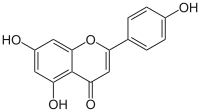
A chemical compound found in parsley, celery, peppermint, chamomile, etc... An autophagy activator. +/via (indirect) AMPK activation (via mTOR), mTOR inhibitor ... reduces blood pressure, anti-inflammatory ... (2022:) increases brain amyloid beta clearance
Inhibits CD38 = preserving NAD+ level (... good with NR!?) like quercetin
Apigenin activities references (neurohacker)
~also a histone class I deacetylase (HDAC) inhibitor ...
Other autophagy activators: Threalose, acipimox (~ niacin !) (in switzerland: Olbetam ), spermidine : Induction of autophagy by spermidine promotes longevity, Felodipine (c.f. Felodipine induces autophagy in mouse brains with pharmacokinetics amenable to repurposing)
8.2022: increases brain amyloid beta clearance
Aqp4 stop codon readthrough facilitates amyloid-beta clearance from the brain seen via Study points to new approach to clearing toxic waste from brain
Mice treated with either apigenin or sulphaquinoxaline cleared amyloid beta significantly faster than those treated with either of the two inactive substances.
Sulphaquinoxaline is not safe for use in people. Apigenin is available as a dietary supplement, but it's not known how much gets into the brain
Procyanidins : LOX-1 inhibitors
A common mechanism for cancer metastasis and atherosclerosis
The oxidized-LDL/LOX-1 axis in tumor endothelial cells enhances metastasis by recruiting neutrophils and cancer cells
-> LOX-1 inhibition:
Procyanidins are potent inhibitors of LOX-1: a new player in the French Paradox

These results suggest that procyanidins are LOX-1 inhibitors and LOX-1 inhibition might be a possible underlying mechanism of the well-known vascular protective effects of red wine,
the French Paradox.
Grape seed
Black Soybean Hull
seabuckthorn
several [other] natural products with cardioprotective effects have been identified to reduce the biological actions of
oxLDL and/or the expression of LOX-1 such as flavonoids from seabuckthorn (Omega-7!), bergamot oil and mulberry leaf aqueous fractions
Phlorofucofuroeckol A & Ecklonia cava extract
Phlorofucofuroeckol A a Phlorotannin seems to inhibit TGF beta signaling (as seen in Phlorofucofuroeckol A from Ecklonia cava ameliorates TGF-beta-induced fibrotic response ...) and as we know now that:
Blood-brain barrier dysfunction in aging induces hyperactivation of TGFsignaling and chronic yet reversible neural dysfunction (Science Translational Medicine) it might be a brain anti-aging compound...
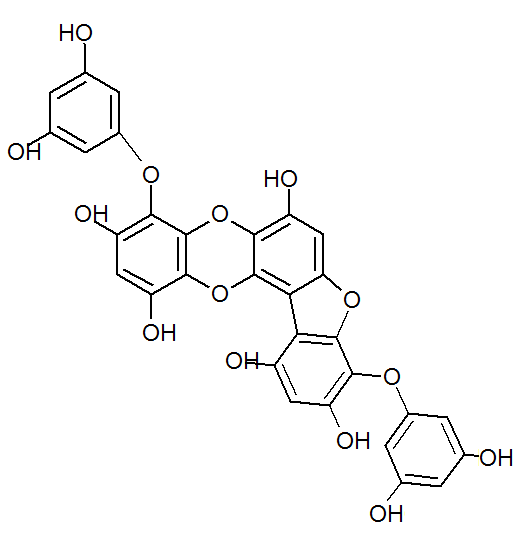
Is found in Ecklonia cava (seaweed; brown alga species found in the ocean off Japan and Korea). Extract are named Seanol / SeaPolynol / Ventol ... supposed to have anti inflamatory, neuroprotective, anti-cancer, anti-metastatic, anti fibrotic, anti-diabetic, sleep inducing, etc... activities! ;-)
Ecklonia cava extract @ examine.com
p.s. improving Blood-Brain Barrier integrity / preventing glial inflamation: alpha-glycerophosphocholine (GPC) ? berberine ?
Nicotinamide Riboside (NR) or Nicotinamide mononucleotide (NMN)
pyridine-nucleoside precursors to (vitamin B3 and) NAD+ (salvaging pathway, less rate limited): Promotes Mitochondrial function and Biogenesis, genomic integrity. Has been shown to rejuvenate stem cells and extend lifespan in mice
 |  |
| NR | NMN |
NR supplementation in mammalian cells and mouse tissues increases NAD+ levels and activates SIRT1 and SIRT3, culminating in enhanced oxidative metabolism
Nicotinamide riboside is uniquely and orally bioavailable in mice and humans.
NR elevates mouse hepatic NAD+ with distinct and superior pharmacokinetics to those of nicotinic acid and nicotinamide. We further show that single doses of 100, 300 and 1,000?mg of NR produce dose-dependent increases in the blood NAD+ metabolome in the first clinical trial of NR pharmacokinetics in humans
... as increases NAD+ level, should increase SIRT6 activity, including its repression of L1 retro-transposons... other sirt6 activators: fucoidan, fluvastatin
... does it increase autophagy / mitophagy? (like niacin, acipimox) ? ...
... (downside) does it increase blood homocysteine level (like niacin) ? ... apparenly no, see Safety and Metabolism of Long-term Administration of NIAGEN (Nicotinamide Riboside Chloride)... (if the supplement really only contains NR not niacin!)
(caution metabolites, niacin: flush, ?intestinal flush?, high blood glucuse,
Quercetin
Increases mitochondrial biogenesis (like PQQ Sirt1 and Sirt3 activator), could prevent the formation of glucosepane, the most abundant AGE in human...
(March 2015:) is a senolytic agent (kill "polluting" senescent cells), could restore cardiac function after a single dose (50 mg/kg on mice).
Moreover (2016), it looks it can decrease the NAD+ degradation "activity" of CD38 (activity that increases strongly with age) = should be taken together with Nicotinamide Riboside !?
c.f. CD38 Dictates Age-Related NAD Decline and Mitochondrial Dysfunction through an SIRT3-Dependent Mechanism.

The Achilles? Heel of Senescent Cells: From Transcriptome to Senolytic Drugs
Also a histone deacetylase (HDAC) inhibitor e.g. Targeting the epigenome: Screening bioactive compounds that regulate histone deacetylase activity seen via Food Bioactive HDAC Inhibitors in the Epigenetic Regulation of Heart Failure (good for hearth and blood pressure) ... as histone deacetylation around CSB promotor is an early determinant of replicative senescence c.f. CSB promoter downregulation via histone H3 hypoacetylation is an early determinant of replicative senescence ... might be an anti cellular aging compound.
(also apigenin, emodin, myricetin)
Also good against glial inflammation = preserving blood barrier integrity (to be used with "Phlorofucofuroeckol A" / Ecklonia cava extracts ?)
Is a P-glycoprotein inhibitor ... could improve (stomach) (and blood brain barrier!) absorbtion of other coumpounds e.g. berberine
p.s. another natural senolytic agent fisetin (the strongest senolytic natural compound so far!?) + also reduces inflamation and glycation ...
p.s. higher bio-availability: Enzymatically Modified Isoquercitrin (EMIQ) (used for "seasonal relief" !); "phytosome" or lecithin quercetin,
Curcumin
(Histone) Acetylation inhibitor acetyltransferase inhibitor*
p.s. Protein acetylation has been shown to be linked to aging c.f. Life span extension by targeting a link between metabolism and histone acetylation in Drosophila
 |
| Anti-inflammatory (inhibitor of NF-?B activation, inhibitor of mTOR ...), cell death "inducer" (classical apoptosis, but also mitotic catastrophe, necrosis and maybe autophagy), ~antioxidant, caloric-restriction mimetic / xenohormetic (via mTor inhibition, Nrf2 activation ?), iron chelator, mitophagy inducer, anti-angiogenic etc!... On wikipedia, On Pubmed |
n.b. SIRT6, NF-?B and aging article
n.b. other NF-?B inhibitors: aspirin, astragaloside IV (close to cycloastragenol ~telomerase activator!?).
n.b. other mTor inhibitors: metformin, protein/methionine restriction, aspirin, angiotensin-converting enzyme inhibitors? (as Angiotensin II activates mTOR pathway) etc...
n.b. other protein restriction mimetic, methionine restriction, "
glycine supplementation":http://www.fasebj.org/cgi/content/meeting_abstract/25/1_MeetingAbstracts/528.2
n.b. Bioavailability: ? not great but has a real effect, maybe better with bioperin/piperine (black peper) that interferes with glucuronidation? or now: Longvida curcumin (e.g. curcubrain), BCM-95 Bio-Curcumin (biocurcumax) or Meriva curcumin (time release) ?...
2.2018: double-blind, placebo controlled trial with Theracurmin show memory improvement, anti-inflammatory & anti-amyloid effects
n.b. what about J147 a novel curcumin derivative
Berberine
A benzylisoquinoline alkaloid, (gastro-intestinal) antibacterial known to improve glucose and lipid metabolism has been shown to prolongs the lifespan of naturally aged mice (and Drosophila, C. elegans)...

Early treatement (figure 5a) with 50mg/kg /day extend mice lifespan by 80%!
With allometric scaling to human would correspond to (50/12.3) ~4mg/kg /day (250mg for a 140 pound adult)
lowers blood pressure, glucose level, cholesterol levels
(irritating for the intestins)
Ellagic acid
... neuroprotective ... reduced neuroinflammation, rescued synapse loss, and decreased oxidative stress in R6/2 mouse brains.
... a potent CD73 and CD39 dual inhibitor
Ergothioneine
Naturally occurring amino acid...
Ergothioneine is naturally occurring amino acid thiol/thione molecule synthesised only by some fungi and bacteria. Nonetheless, it is avidly taken up from the diet by humans and other animals through a transporter, OCTN1, and accumulates to high levels in certain tissues.
Powerful antioxidant and cytoprotective properties (in vitro)
Ergothioneine Mitigates Telomere Shortening under Oxidative Stress Conditions
Other telomere "protectors"? : Astragal (Astragaloside IV), carnosine (carcinine), Alpha-lipoic acid
Butyrate ...
beta-Hydroxybutyrate (BHB) ...
Epigallocatechin gallate (EGCG)
Reversal of TGFbeta-Driven Profibrotic State (in Patients with Pulmonary Fibrosis) ...
(like Phlorofucofuroeckol A in eclonia cava ?)
Ursolic Acid
Immunomodulator and anti neurodegeneration; Promoted nerve cell repair and restored the myelin sheath covering and protecting nerve endings in a mouse model of multiple sclerosis (MS), a study reported.
Halofuginone
Amino acid starvation mimetic (= "caloric" restriction mimetic) (... autophagy inducer ... )
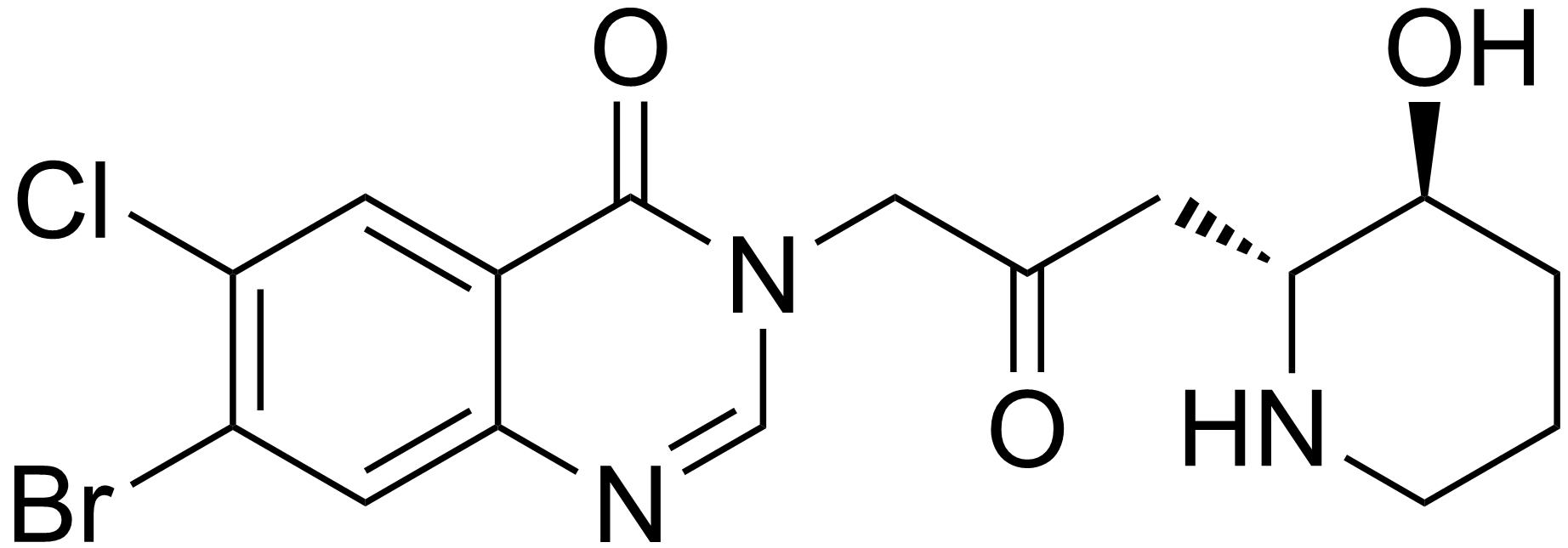
Amino acid starvation enhances vaccine efficacy by augmenting neutralizing antibody production
Specific reduction in the intake of proteins or amino acids (AAs) offers enormous health benefits, including increased life span, protection against age-associated disorders, and improved metabolic fitness and immunity. Cells respond to conditions of AA starvation by activating the amino acid starvation response (AAR). Here, we showed that mimicking AAR with halofuginone (HF) enhanced the magnitude and affinity of neutralizing, antigen-specific antibody responses in mice immunized ...
Can be found in the Chinese herb Dichroa febrifuga (Chang Shan)
There are no pure Halofuginone "supplements" ...
From chemical suppliers: @ bocsci @sigma
Chang Shan extract: Hanoju Chang Shan @ amazon.de
Threalose
A nonreducing disaccharide (Glc-Glc) stimulating autophagy through the adenosine monophosphate-activated protein kinase (AMPK) ... (neuroprotector, hepatoprotector ...) !when not cleaved into 2 glucose by intestinal cell threalase enzyme !?
Safe for human consomption c.f. review

Mystery solved: Trehalose kickstarts autophagy by blocking glucose transport
Trehalose inhibited glucose transporters of the SLC2A family, which mediate hexose import to hepatocytes and other cell types. The reduction in glucose availability triggered a starvation signal, causing the rapid phosphorylation and activation of AMPK and a concomitant increase in ULK1 phosphorylation and activation, which induced autophagy.
(~downside? ... Clostridium difficile ... !?but many 'normal' enteric bacteria could also grow on Threalose)
Other autophagy "stimulators": Luteolin (together with piperlongumine [senolytic] in "Autophagy Renew" iherb suplement) (celery, broccoli, artichoke, green pepper, parsley ...) also regenerates pigmented hair when applied during wound healing (Medication-Induced Repigmentation of Gray Hair: A Systematic Review)
Ascorbyl palmitate
Inhibits brain inflamation (via microglia inhibition, via "inflammatory hyaluronic acid" signaling reduction), and has been shown to produce a longevity gene expression "profile" when fed to mice.
hydrolized in the stomach? (>80%)
Arctigenin

Found in Burdock Root, promotes proteosome activity (via increased ubiquitination) c.f. 1 (also a mTOR inhibitor c.f. 2 )
might reduce blood pressure; synergistic antiproliferative effect effect with quercetin c.f. 3;
Pycnogenol
A natural procyanidin, lowers blood pressure, has antioxidant, anti-inflammatory, vasodilatory, and anticoagulant action
MitoQ
Now that we know that mitochondria are implicated in cellular aging, this mitochondria targeted CoQ10 chemical that prevents mitochondrial oxidative damage, looks like a promising anti-aging compound; know to be safe in human, and already shown to have rejuvenating effects (e.g. on arterial endothelium)
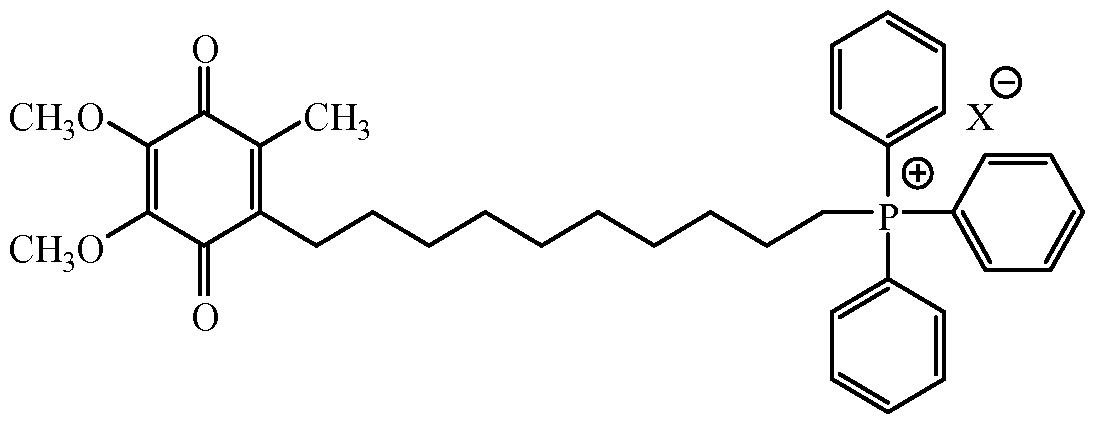
Novel antioxidant makes old blood vessels seem young again
when taking the supplement, dilation of subjects' arteries improved by 42 percent, making their blood vessels, at least by that measure, look like those of someone 15 to 20 years younger.
p.s. other "supplements" targeting mitochondria: peptide SS-31 (=Elamipretide), SkQ1 (=visomitin), SkQR1, SkQ3 ...
Carnitine
(L-carnitine, Acetyl-L-carnitine, Propionyl-L-carnitine)
Improves carbohydrate metabolism, excercise recovery, stamina, shows anti-ischemic, vasodilatator activities (increasing blood flow and nitric oxide production)
propionyl-L-carnitine a propionyl ester of carnitine ...
combining: Alpha Lipoic Acid, Acetyl-L-Carnitine and Carnosine ?
Resveratrol & Pterostilbene
Pterostilbene =~ bio-available resveratrol ... SIRTx activator
(good with NR!? good with classical resveratrol!?)

Nutritional ingredients containing pterostilene markedly reduce blood pressure. 'looks like it has cardioprotective effect.
NLRP3 Inflammasome / Fibrosis inhibitor
s. resveratrol improves insulin sensitivity and glucose uptake in the muscle fibers, promoting muscle growth / preserving muscle; does Pterostilbene do the same (likely yes)
s. resveratrol is also an inhibitor of aryl hydrocarbon receptor (AhR) that seems to be involved in kidney disease c.f. Temporal and tissue-specific activation of aryl hydrocarbon hydroxylase signaling may be visualized in discrete mouse models of kidney disease and also Resveratrol, a natural aryl hydrocarbon receptor antagonist, protects sperm from DNA damage and apoptosis caused by benzo(a)pyrene
Effect of resveratrol and pterostilbene on aging and longevity - review
Alpha-lipoic acid
... amphiphilic anti-oxidant, raises the levels within cellular glutathione
... (recently found:) stimulate PGC1-alpha (=exercise mimetic?) and telomerase!
(but has poor solubility, stability and bioavailability).
'looks like isomer R form ("R lipoic acid) is more active/stable.
(check: to be used with acetyl L-carnitine (ALC) ?)
In the eyes: lipoic acid goes into the lens and is reduced to dihydrolipoic acid that breaks down lens disulfide bonds, rendering it more flexible = presbyopia treatment!?
Copper, iron, mercury and cadmium chelator!?
Tocotrienols
forms of vitamin E (others: tocopherols)

~ anti-proliferative (+ anti-invasion and chemonsensitization), neuroprotector, radio-protector, glycation ~inhibitor, telomere protector and blood pressure & LDL cholesterol level "lower-er"
Senescence delaying activity in primary cells and rejuvenating effects in senescent cells
Honokiol
Honokiol from magnolia bark c.f. Honokiol blocks and reverses cardiac hypertrophy in mice by activating mitochondrial Sirt3

Interfers with mitochondrial respiration (lowers / inhibits oxygen consumption rate) in cancer cell lines, leading to apoptosis. Anti-proliferation, pro-apoptotic compound with anti-inflammatory, antithrombotic, antiarrhythmic, antioxidative, central depressant, muscle relaxant, and anxiolytic effects.
Honokiol inhibits aromatase and 5?-reductase type 1 in a dose-dependent manner : increases free testosterone
P5P (pyridoxal 5'-phosphate)
a lipid glycation inhibitor (and more)
Glycine
Dietary glycine supplementation mimics lifespan extension by dietary methionine restriction
Rhodiola rosea
on wikipedia
Increases resistance to stress (UV, heat/cold etc...) / decrease levels of (stress-related) hormone cortisol. Increases fly lifespan by 10%.
Urolithin A
... from ellagitannins and punicalagins (e.g. in Pomegranate) by stomach bugs ?
mitophagy inducer?
look like even before intestine conversion, Pomegranate polyphenols have real effects!
Aspirin

Double hit on TOR!: inhibits TOR ~directly, + activate AMPK ~directly (that inhibits TOR)
n.b. another AMPK activator: the anti-diabetic alkaloid Berberine c.f. Berberine is Superior to Metformin
(also reduce glial neuro-inflammation = protect brain barrier integrity)
Annonacinone

Inhibitor of plasminogen activator inhibitor-1 (pai-1) c.f. Characterization of the Annonaceous acetogenin, annonacinone, a natural product inhibitor of plasminogen activator inhibitor-1. As we know that A null mutation in SERPINE1 [pai-1] protects against biological aging in humans Annonacinone could/should have an anti-aging activity, as
Found in Graviola / soursop (might reduce blood pressure)
Oleuropein

A chemical compound found in olive leaf. (Antioxydant and) proteasome activator!
DHA and EPA omega 3s
Docosahexaenoic acid (DHA) and eicosapentaenoic acid (EPA): Natural inflammatory process controlers. Inhibit macropage inflammatory response (secretion of cytokines and other proteins that cause inflammation) via the activation of their GPR120 receptors. Might reduce / prevent chronic inflammation and its subsequent ill effects...
caution: since fish oil is so easily oxidized it may lead to greater oxidative stress within cells and thus actually accelerate aging!... (= no daily intake!?)
best Omega 3 seen via article: Omega 3 fatty acids found in seafood linked to healthy aging (Oct. 2018) EPA, then DPA (not DHA, ALA)
Monacolin K
A Statin found in red yeast rice
In addition to Cholesterol lowering statins seem to inhibit telomere shortening c.f. Telomere/Telomerase system: a new target of statins pleiotropic effect?
Gotu Kola (Centella asiatica) extract
Promotes neurogenesis, axonal growth, reduces oxidative stress in the brain, increases levels of glutathione, Increase collagen production, antifibrotic agent ...
One of it's compound: Asiaticoside
